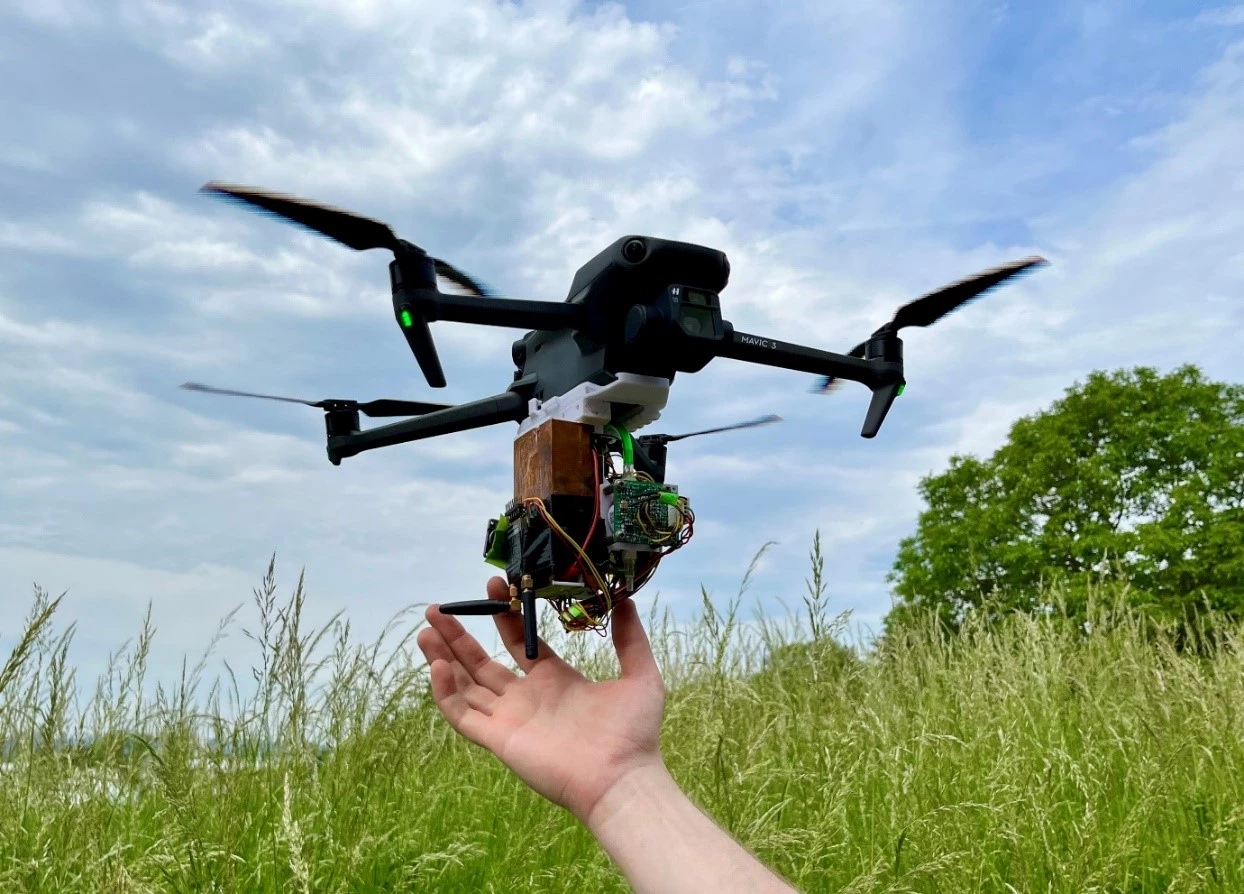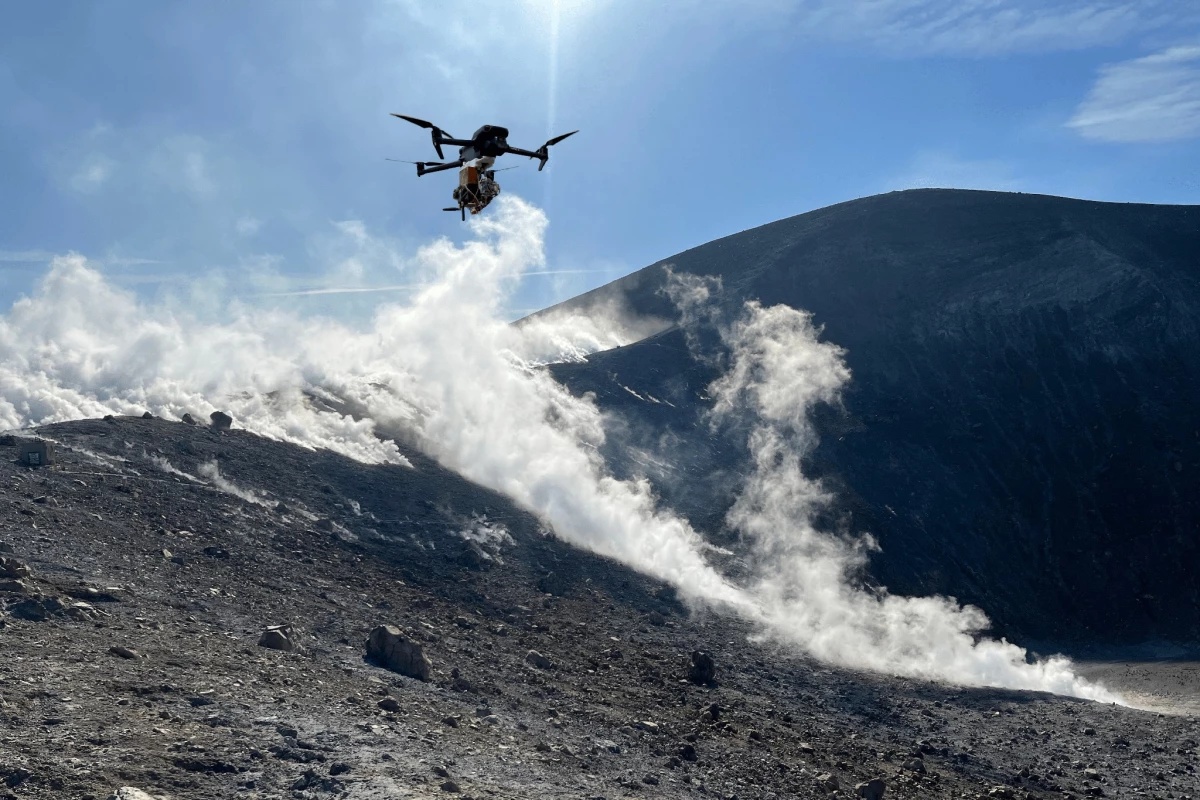The analysis of volcanic gases allows scientists to determine what processes are taking place deep within volcanoes, including the possibility of impending eruptions. And while big, expensive drones have previously been used to sample those gases, a small consumer model can now do the job.
At one time, the only method of collecting such gases involved actually climbing up to the rim of an active volcano's crater. Not only is this a very arduous and time-consuming process, but it can also result in harm to the volcanologist, should an eruption occur while they're up there.
More recently, many scientists have instead started using remotely controlled drones to obtain gas samples and other data.
Although the aircraft do make things considerably safer and easier, the type of drones used are typically large industrial models that may weigh up to 25 kg (55 lb). Not only is it difficult to lug such drones to the often remote areas where volcanoes are located, but the aircraft are also quite expensive – so irretrievably crashing one into a volcanic crater is kind of a big deal.
With such limitations in mind, Prof. Thorsten Hoffmann and a team from Germany's Johannes Gutenberg University Mainz set out to miniaturize the required technology.
Working with colleagues from Heidelberg University, they started out with a DJI Mavic 3 consumer quadcopter, then proceeded to add components such as an ESP32 microcontroller/Wi-Fi module, miniaturized sulphur dioxide and carbon dioxide sensors, a small air-sampling pump, a GPS module, and a flash memory drive.
All of these devices are powered by a 1,300-mAh lithium-polymer battery (separate from the drone's own battery), and are contained within a 3D-printed box mounted on the Mavic 3's undercarriage. Data is transmitted from the drone to a ground-based computer in real time, plus it's recorded on the onboard memory.

The finished product is known as the little-RAVEN (Remote-controlled Aircraft for Volcanic EmissioN analysis), and it weighs just 1.23 kg (2.7 lb). A complete field package, consisting of the drone, two spare batteries, a backpack and other accessories (such as the data-receiving computer) tips the scales at 3 kg (6.6 lb) and is worth approximately €3,500 (about US$3,718). By contrast, the larger drones that are currently used can cost up to $10,000, not including the extra gas-sampling hardware.
In test flights performed this April on the aptly named Italian island of Vulcano, little-RAVEN successfully obtained and relayed volcanic gas readings from the La Fossa crater. More specifically, it accurately reported on the sulphur dioxide/carbon dioxide ratio of gas plumes emitted by the crater – that ratio can be used to determine the likelihood of an eruption taking place in the near future.
A paper on the research was recently published in the journal Scientific Reports.




